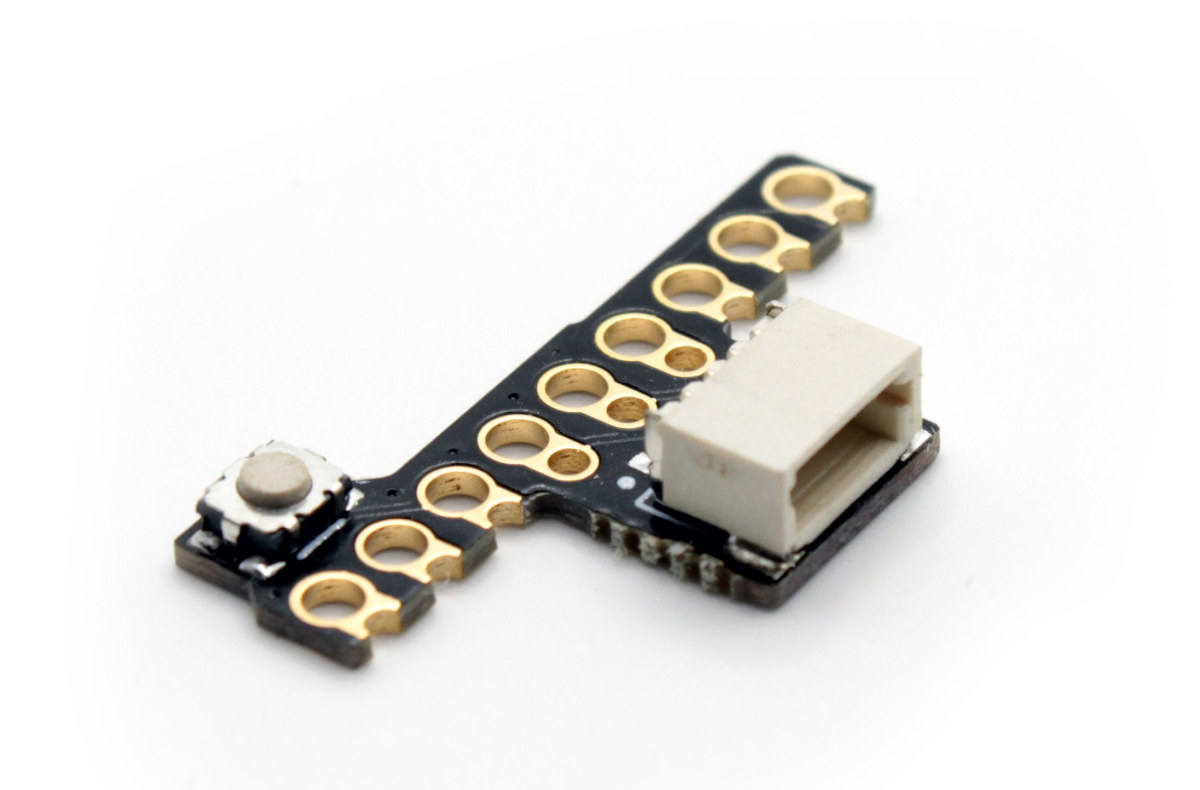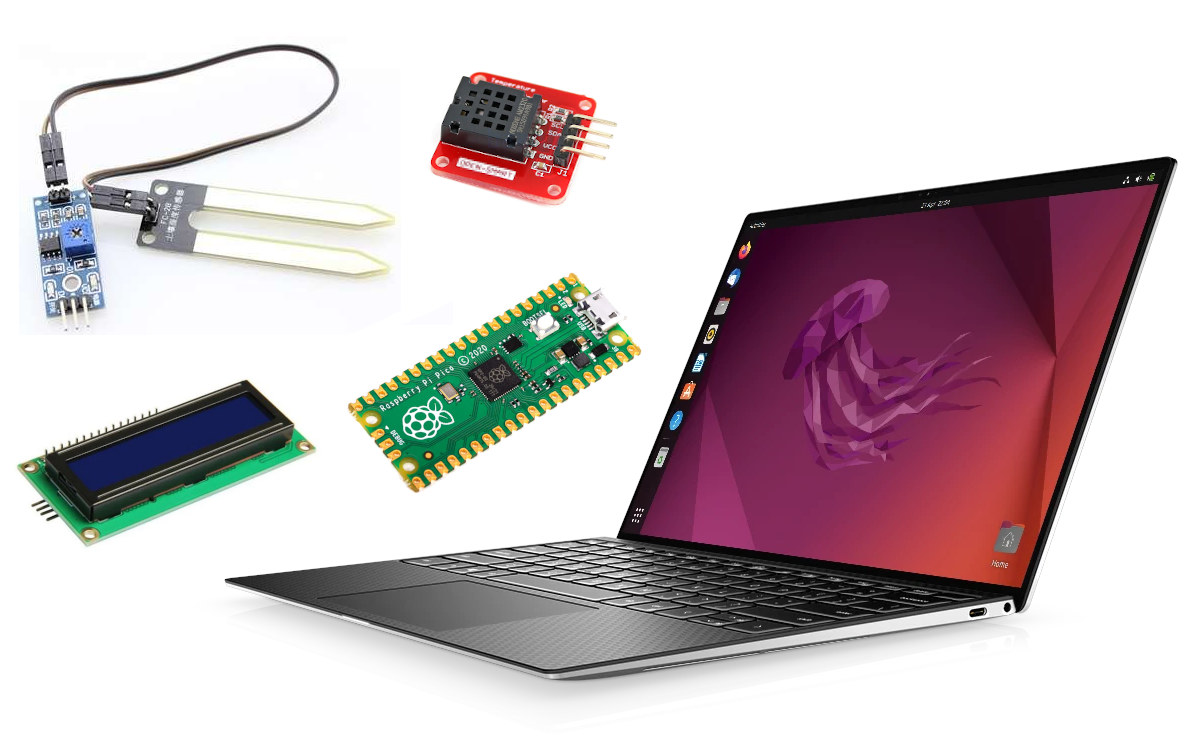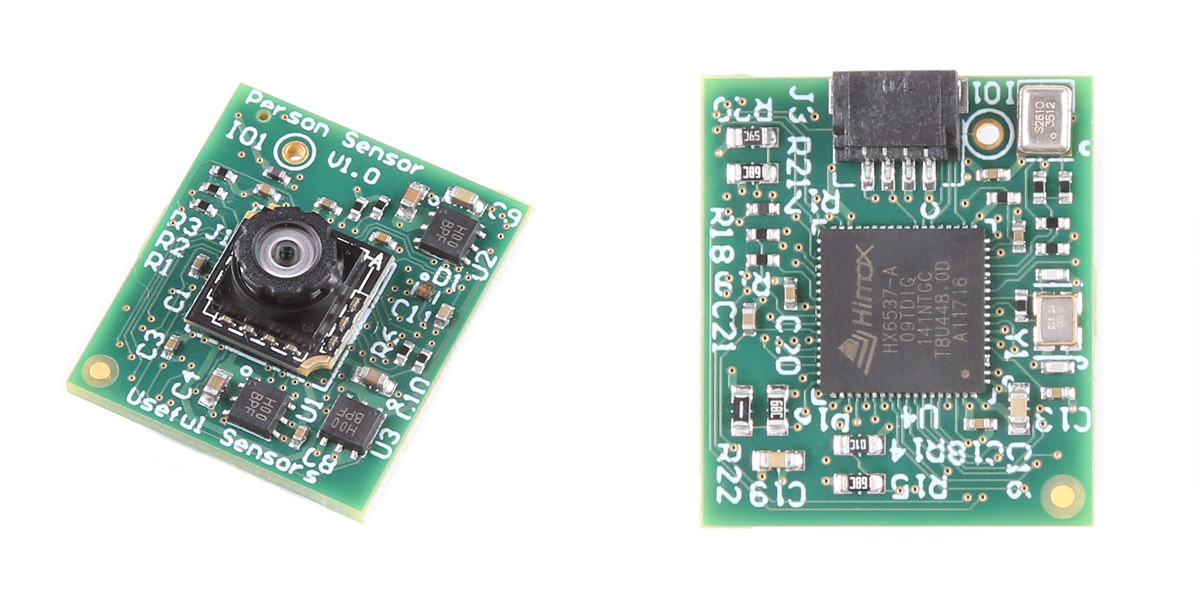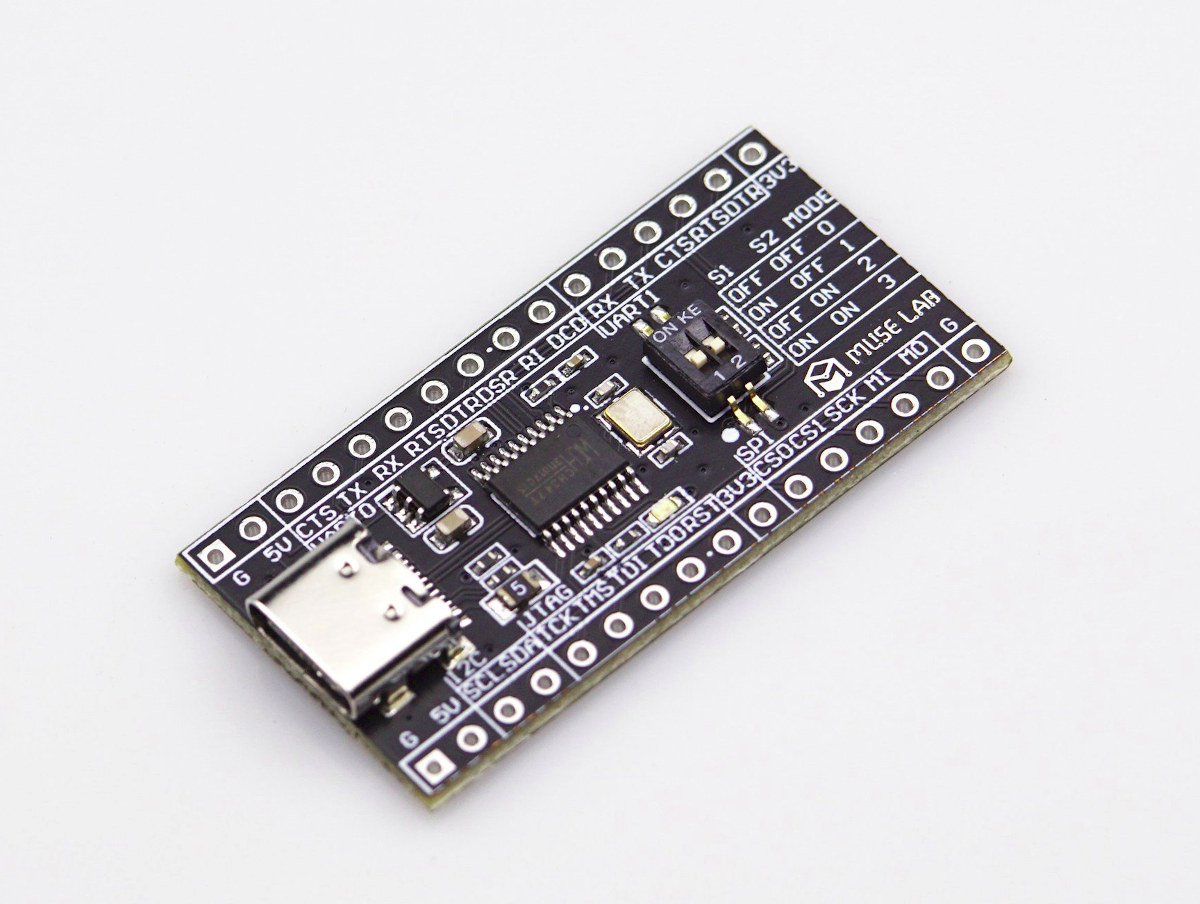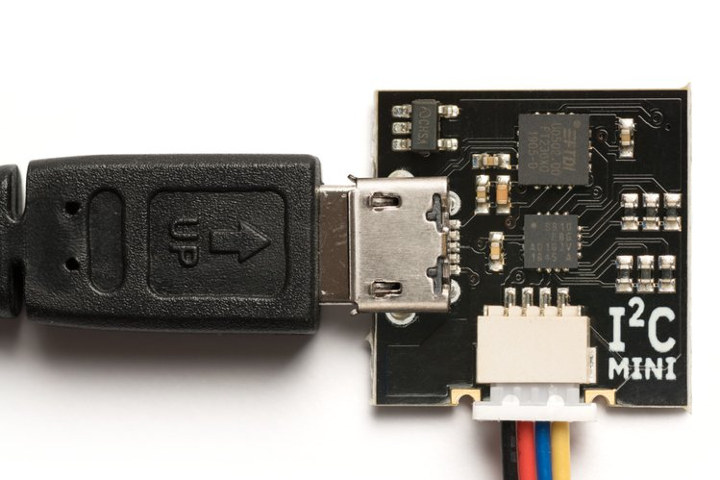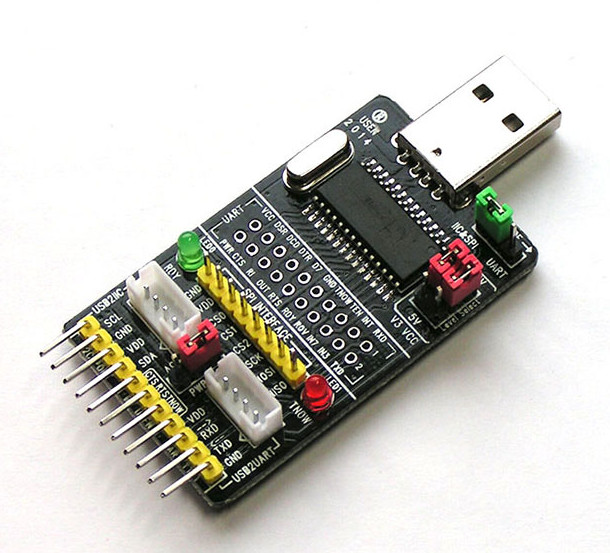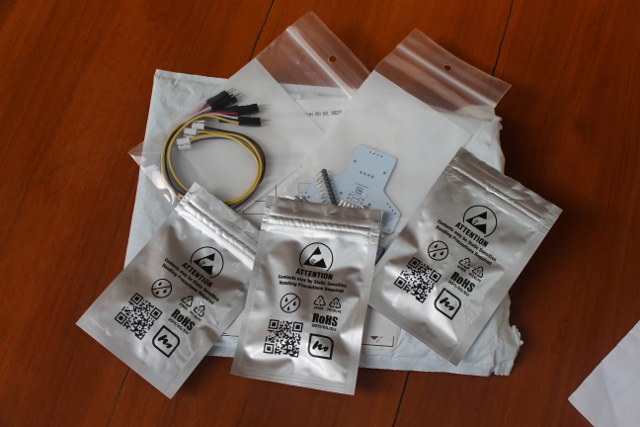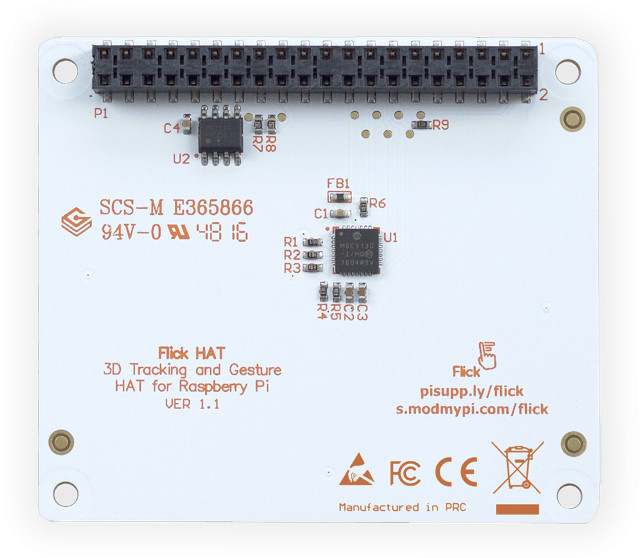Pico QwiicReset is a tiny add-on board for the Raspberry Pi Pico that adds a Reset button as well as the Qwicc connector to more easily connect I2C modules to the popular MCU board. The lack of a Reset button on the Raspberry Pi Pico has always been an issue since the reset pin is used to flash the firmware, so people have tried various ways to add a Reset button to the Pi Pico board. The Pico QwiicReset is like an extension of the Pimoroni “Captain Resetti” button with an extra Qwiic connector. The Pico QwiicReset board is shown soldered to a Raspberry Pi Pico board above, but it’s also compatible with the Raspberry Pi Pico W and it works with or without headers soldered to the board. But you may noticed the Debug header is partially covered on Pico W, which means the add-on board cannot be used […]
RP2040 firmware converts Raspberry Pi Pico into a an I2C to USB bridge
Nicolai Electronics’ rp2040-ic2-interface open-source firmware for the Raspberry Pi Pico (or other Raspberry Pi RP2040 boards) converts the board into an I2C to USB bridge to connect any I2C sensor or module to a PC or other hardware without GPIOs. The firmware implements the USB protocol expected by the I2C-Tiny-USB kernel driver used by the original I2C-Tiny-USB project for Microchip ATMega 8-bit AVR microcontrollers. The RP2040 is however not a fork of the original project, but instead a complete re-implementation of the firmware. You’ll need to connect your I2C sensor, display, or another module to the SDA (GPIO 2) and SCL (GPIO 3) pins of the Raspberry Pi RP2040 microcontroller and flash the “pre-release” firmware to the board. You’ll find it together with the source code written in C language on GitHub. Note the project has a “proof of concept status” and more testing is needed to make sure that […]
Easily add face detection to your project with the Person Sensor module
It’s now much easier to AI features to your project thanks to better tools, but as we’ve experienced when trying out Edge Impulse machine learning platform on the XIAO BLE Sense board, it still requires some effort and the learning curve may be higher than some expect. But for common tasks like face detection, there’s no reason for the solution to be hard-to-use or expensive, and Pete Warden (Useful Sensors) has designed the $10 Person Sensor fitted with a camera module pre-programmed with algorithms that detect nearby faces and reports the results over an I2C interface. Person Sensor specifications: ASIC – Himax HX6537-A ultra-low-power AI accelerator @ 400 MHz with 2MB SRAM, 2MB flash Camera Image Sensor – 110 degrees FOV Image scan rate – 7Hz with no facial recognition Image scan rate – 5Hz with facial recognition active Host interface Qwiic connector for the I2C interface up to […]
$5 CH347 board is a USB 2.0 bridge to I2C, SPI, UART, JTAG, and GPIO
MuseLab USB-HS-Bridge is an inexpensive ($5) board based on WCH CH347 chip with a USB 2.0 Type-C interface that acts as a bridge for I2C, SPI, UART, and JTAG interfaces, as well as GPIOs. It’s notably useful to debug and download bitstreams to FPGA development boards, but it can also be used to connect various peripherals such as I2C sensors, SPI flash devices, UART devices to basically any host with a spare USB 2.0 host port. USB-HS-Bridge specifications: Chip – WCH CH347 high-speed USB to UART, I2C, SPI and JTAG chip (See link to the datasheet for details) USB – 1x USB 2.0 Type-C port with up to 480 Mbps data rate I/Os – 2x 16-pin header with 2x UART interfaces up to 9 Mbps baudrate 1x I2C for EEPROM or sensors 1x SPI master interface with 2 chip select signals to control up to 2x SPI slave devices. The […]
I2CMini is tiny USB to I2C Bridge for your PC or SBC (Crowdfunding)
Last year, we wrote about Excamera Labs SPIDriver tool to control and monitor SPI devices from your computer, but this year the company launched another similar product for I2C: I2CDriver. Both debugging tools show signals and information on a small display, but if all you want to do os to control I2C devices from your computer or isolated from an SBC, Excamera Labs has now come up with the tiny I2CMini USB to I2C bridge board. I2CMini key features & specifications: Fast transfer – sustained I²C transfers at 400 and 100 kHz I²C pullups – programmable I²C pullup resistors, with automatic tuning Dual I²C ports – a castellated 0.1″ header, plus a Qwiic standard connector Jumpers – Color-coded Sparkfun Qwiic jumper included for instant connection 3.3 V output: output levels are 3.3 V, all are 5 V tolerant Supports all I²C features – 7- and 10-bit I²C addressing, clock stretching, […]
WCH CH341 USB to Serial Chip Gets Linux Drivers to Control GPIOs over USB
USB to serial chips are often used as a debug interface either directly on the target board, or via a dedicated debug board. But some models have extra pins exposed, and one of those is WCH CH341, which also includes I2C & SPI interfaces and up to 8 GPIOs. But software support for those extra pins is not currently built-in into the drivers found in Linux mainline, and you’d also have to find a board that breakout the relevant pins. It turns out there are few of things including “CH341A ALL IN 1 USB to SPI/I2C/IIC/UART/TTL/ISP serial adapter” board going for $10 shipped on Aliexpress, and which Zoobab successfully used to control 6 (out of 8) GPIOs over USB. The board comes with a USB board to connect to your computer, several header for I2C, UART, SPI, some LEDs, and jumper to select I2C/SPI or UART mode and voltage (5V/3.3V). […]
Getting Started with TinyLIDAR Time-of-Flight Sensor on Arduino and Raspberry Pi
TinyLIDAR is an inexpensive and compact board based on STMicro VL53L0X Time-of-Flight (ToF) ranging sensor that allows you to measure distance up to 2 meters using infrared signals, and with up to 60 Hz. Contrary to most other VL53L0X boards, it also includes an STM32L0 micro-controller that takes care of most of the processing, frees up resource on your host board (e.g. Arduino UNO), and should be easier to control thanks to I2C commands. The project was successfully funded on Indiegogo by close to 600 backers, and the company contacted me to provided a sample of the board, which I have now received, and tested with Arduino (Leonardo), and Raspberry Pi (2). TinyLIDAR Unboxing I was expecting a single board, but instead I received a bubble envelop with five small zipped packages. Opening them up revealed three TinyLIDAR boards, the corresponding Grove to jumper cables, and a bracket PCB for […]
Flick HAT is a 3D Tracking & Gesture Expansion Board for Raspberry Pi Boards
Way back in 2012, I wrote about Microchip MGC3130 3D Gesture Controller with “GestIC technology” which allows you to make gesture up to 15cm from the surface and at lower power in order to control devices in a new way. At the time, the chip was said to sell for $2.26 in large quantities, and the evaluation kits went for $169 and up. I’m writing about MGC3130 about 5 years later, as Seeed Studio has started taking pre-orders for a $25.89 Flick HAT board based on the solution, and designed for Raspberry Pi boards, or other boards with a compatible 40-pin “GPIO” header featuring an I2C interface. Flick HAT 3D Tracking & Gesture HAT specifications & features: Chip – Microchip MGC3130 3D Tracking and Gesture Controller Tracking / Gesture Features 3D tracking Gesture sensing up to 15cm: Swipe (east to west, west to east, north to south, south to north), […]


